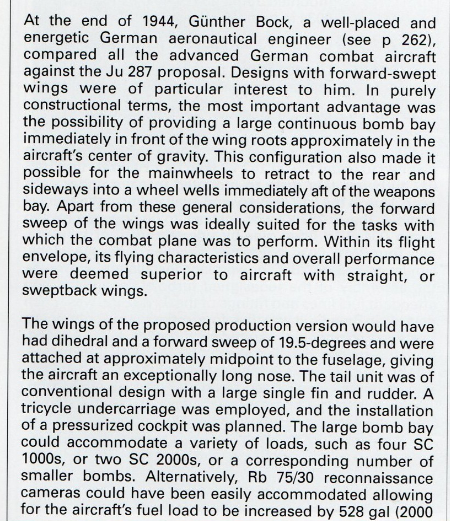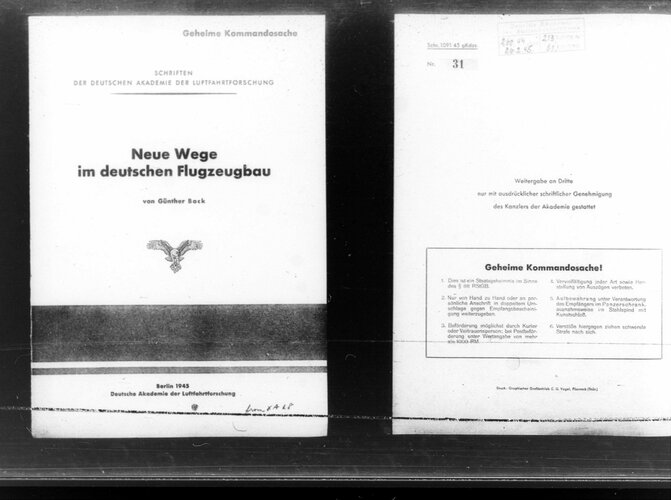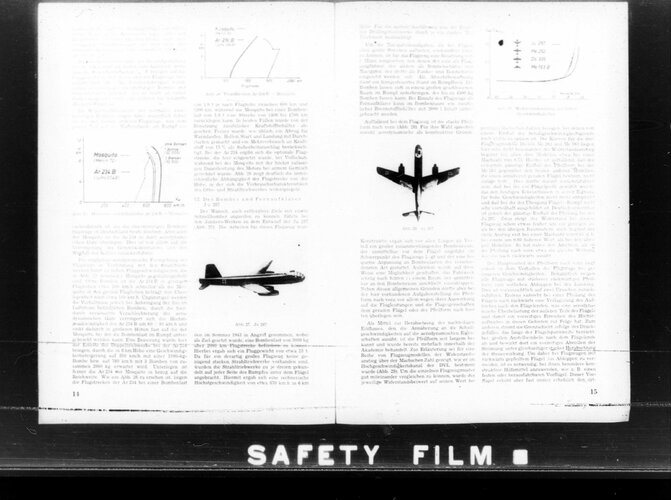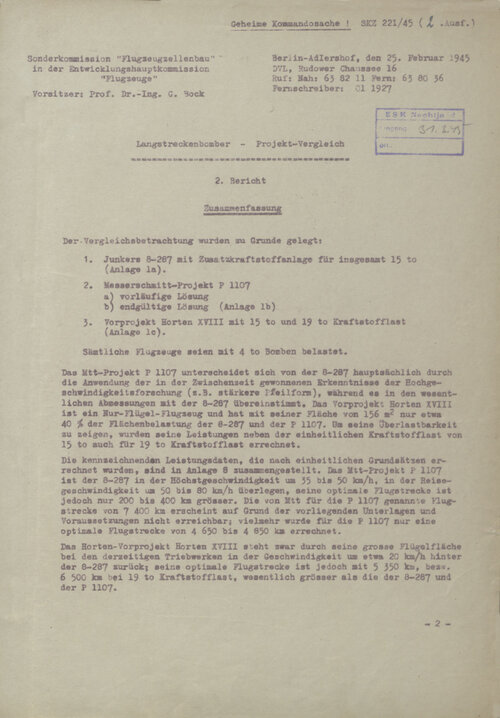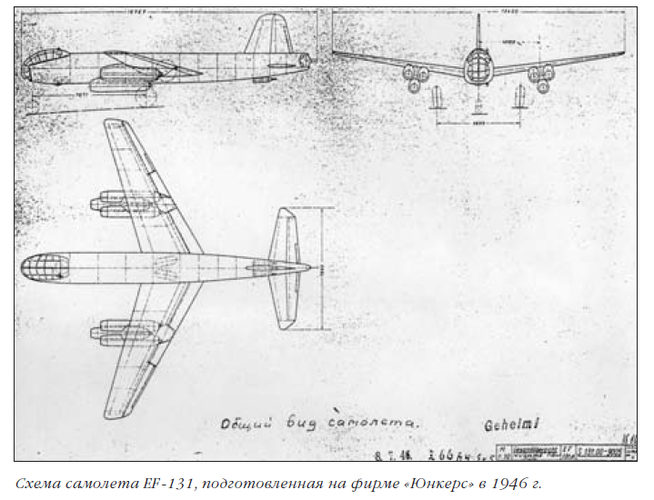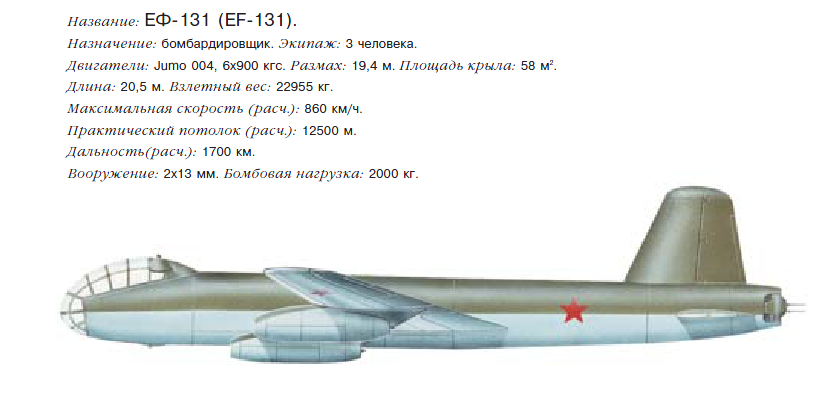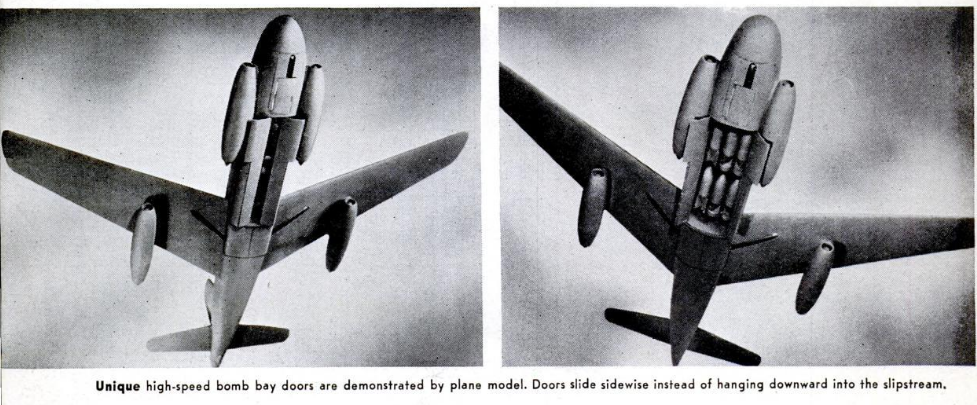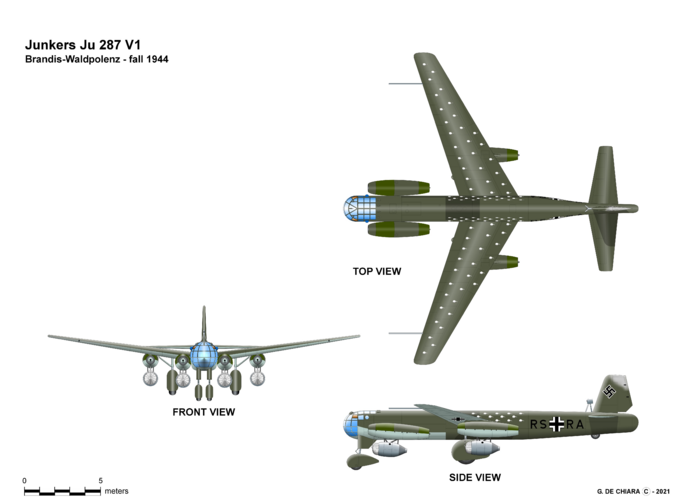You are using an out of date browser. It may not display this or other websites correctly.
You should upgrade or use an alternative browser.
You should upgrade or use an alternative browser.
Junkers Ju 287, Developments, Projects and Prototypes
sgeorges4
I really should change my personal text
- Joined
- 8 October 2017
- Messages
- 659
- Reaction score
- 316
Do you have something on the junkers 287/henschel hs 132 mistel? I think I had something in a Lufthart magazine,but I don't rember wich one(it's the one with a arado ar234/henschel hs 132 mistel)?
Thanks for your answwer!
Thanks for your answwer!
- Joined
- 19 July 2016
- Messages
- 3,725
- Reaction score
- 2,681
What were the experiences of those forward swept wings at the time? What I have come across suggests these designs tend to suffer from chronic wing weakness/failures. Is there any actual data on the subject?
Aubi
ACCESS: Secret
The side-view has backwards swept wings and no tail turret, no engines in the wings, and no turret behind the (very differently glassed) cockpit.
taildragger
You can count on me - I won a contest
- Joined
- 2 November 2008
- Messages
- 384
- Reaction score
- 440
The big inherent disadvantage is structural. Whereas deflection of a swept wing is self-correcting (increasing aerodynamic forces push the structure back into it's natural position the further it deflects) an FSW wing experiences a vicious cycle where increasing aerodynamic forces act to increase deflection the further it progresses. For that reason, FSW structures have to be much stiffer and therefore heavier than swept wings.What were the experiences of those forward swept wings at the time? What I have come across suggests these designs tend to suffer from chronic wing weakness/failures. Is there any actual data on the subject?
They do have aerodynamic advantages though, particularly relating to stall behavior. These advantages caused the brief enthusiasm for FSW designs in the 90s when it became apparent that fibers in composite structures could be oriented to maximize stiffness where needed and minimize the weight penalty.
Of course the structural disadvantage disappears if the aircraft is flying backwards - perhaps some sort of super cobra maneuver inspired Sukhio's FSW prototype.
Last edited:
Vahe Demirjian
I really should change my personal text
- Joined
- 28 February 2013
- Messages
- 816
- Reaction score
- 539
You're right that the EF 131 and Ju 287 V2 were different aircraft, the latter being unarmed, but I recently got copies of Griehl's Jet Planes of the Third Reich: The Secret Projects, Volume Two and Horst Lommel's Junkers Ju 287: The World's First Swept-Wing Jet Aircraft, and it recently transpired to me that the Ju 287 V2 actually had the same airframe as the Ju 287 V1, except that it had a slightly lowered horizontal stabilizer, the lack of a tail wheel, and six jet engines. The 3-view of plane labeled as the Ju 287 V2 (taken from Tom Hitchcock's 1974 Monogram publication on the Ju 287) is actually of the Ju 287 V3, because the V3 was to mirror the production Ju 287, and the V3, like the V2, had no armament (the Ju 287 V5 was to be the first Ju 287 prototype with armament). And contrary to some German aviation sources, and Hitchcock's publication, the Ju 287 V2 was not only never flown in the USSR after WW2, it was also blown up by the Germans along with V1 to avoid capture by Allied forces, even though the Soviets did use remnants of the Ju 287 V2 in the construction of the EF 131.That Wikipedia article is a bit incorrect - the Ju 287V2 and the EF-131 are very similar, but different aircraft. When the Soviet command became interested in Ju 287 development, any construction drawings weren't found and Baade's team had to recreate the design anew (though some aggregates built for the 287V2 were used for EF-131 prototype - especially some wing sections). The EF-131 fuselage was 2.5 meters longer than the 287V2, and the empennage differed in dimensions and (slightly) in shape. Also, EF-131 had remote-controlled gun turret with two 13-mm machine guns in the tail end of fuselage, which Ju 287V2 had not. The automatic slats were also redesigned.
Here are 3-views of both the 287V-2 and EF-131. The 287V-2 drawing was found at http://www.airwar.ru/enc/bww2/ju287.html, and the EF-131 is from Dmitry Sobolev's book "German trails in Soviet aviation history".
As also noted by Lommel, the Ju 287 V2 originally was to have four underwing BMW 003s and two fuselage mounted Jumo 004s, but Junkers decided to change the engine configuration for V2 to have six turbojets mounted in two underwing cluster-shaped triple packs. In the one photo on page 72 of Lommel's book, the upper two engines in the new tri-engine configuration adopted for the V2 are the Jumo 004s because the engine starters are visible, and the jet engine below the top two engines with a darker "mouth" is the BMW 003 because the engine starter for the BMW 003 was buried deep inside the intake.
That said, the use of six turbojets for the Ju 287 V2, V3, and EF 131 could be largely responsible for the confusion of the EF 131 with the Ju 287 V2 and V3 in some older books in Nazi aviation, because the EF 131 had tail armament and differently shaped tips of the horizontal stabilizer, even though it had the same airframe design and underwing triple-turbojet pack as V3.
Last edited by a moderator:
Vahe Demirjian
I really should change my personal text
- Joined
- 28 February 2013
- Messages
- 816
- Reaction score
- 539
I saw this drawing at the bottom of page 98 of the Schiffer edition of Lommel's book and the designation in the upper left corner of the cell that contains the writing "Haut-Plan" clearly reads Ju 287 V3 because even though the V3 was to mimic the design of the production Ju 287, it was unarmed.Does anyone have a legible copy of the Ju 287 V3 skin plan (Haut-Plan) by any chance?
I am very interested in the dimensions between the fuselage frames. This drawing was reproduced in Horst Lommel's excellent Ju 287 book (page 98 of the Aviatic Verlag edition) but I can't read the numbers. I don't know if a larger copy may have been published in the Schiffer edition of this book?
Vahe Demirjian
I really should change my personal text
- Joined
- 28 February 2013
- Messages
- 816
- Reaction score
- 539
The fourth image in this post isn't of the EF 131, but instead is of a model of the Junkers Ju 287A-1 made by model kit builder Gunter Sengfelder, judging from the fact that it appears on page 7 of David Myhra's 1998 book Secret Aircraft Designs of the Third Reich.
richard
ACCESS: Top Secret
- Joined
- 1 May 2006
- Messages
- 578
- Reaction score
- 127
Hertel/Frenzel/Hempel-Junkers patent (21-03-1944) " Low resistance design of high-speed aircraft, including those with out-of-plane displacement body "
Vahe Demirjian
I really should change my personal text
- Joined
- 28 February 2013
- Messages
- 816
- Reaction score
- 539
The German high command called the first two Ju 287 prototypes Ju 288 V201 and V202 to deceive outsiders into thinking that these planes were merely jet-powered derivatives of the Ju 288, as explained in Horst Lommel's book on the Junkers Ju 287.In Luftfahrt History 16,
why they wrote on the drawings Ju-288 and not Ju-287,a misprint or what ?.
- Joined
- 7 June 2009
- Messages
- 525
- Reaction score
- 126
You're right that the EF 131 and Ju 287 V2 were different aircraft, the latter being unarmed, but I recently got copies of Griehl's Jet Planes of the Third Reich: The Secret Projects, Volume Two and Horst Lommel's Junkers Ju 287: The World's First Swept-Wing Jet Aircraft, and it recently transpired to me that the Ju 287 V2 actually had the same airframe as the Ju 287 V1, except that it had a slightly lowered horizontal stabilizer, the lack of a tail wheel, and six jet engines.
Same airframe as the V1? Do you mean that V2 also had He 177 fuselage and fixed landing gear?
Vahe Demirjian
I really should change my personal text
- Joined
- 28 February 2013
- Messages
- 816
- Reaction score
- 539
That's what I said. The V2, like the V1, was made by cobbling an He 177 fuselage with Ju 352 and B-24 landing gear as well as a Ju 188G-2 empennage, and it had fixed landing gear. However, the upper nose wheel undercarriage pants were painted in a bright color rather than black, the tailwheel was removed, and the main undercarriage was braced inward, not outward. Images of the Ju 287 V2 can be found on pages 71, 73, and 74 of Lommel's book, and I've attached a diagram (from page 5 of the Aviatik magazine about the Junkers Ju 287 and EF 131) with a couple side views showing what the Ju 287 V2 looked like. Also note that the Ju 287 V2 was given the cover designation Ju 288 V202 by the RLM, just as the Ju 287 V1 was given the cover designation Ju 288 V201.You're right that the EF 131 and Ju 287 V2 were different aircraft, the latter being unarmed, but I recently got copies of Griehl's Jet Planes of the Third Reich: The Secret Projects, Volume Two and Horst Lommel's Junkers Ju 287: The World's First Swept-Wing Jet Aircraft, and it recently transpired to me that the Ju 287 V2 actually had the same airframe as the Ju 287 V1, except that it had a slightly lowered horizontal stabilizer, the lack of a tail wheel, and six jet engines.
Same airframe as the V1? Do you mean that V2 also had He 177 fuselage and fixed landing gear?
Attachments
Vahe Demirjian
I really should change my personal text
- Joined
- 28 February 2013
- Messages
- 816
- Reaction score
- 539
In his book about the Ju 287, Horst Lommel states on page 79 that Junkers Ju 287 V4 was 60 percent complete when the Soviets overran the Junkers plant in Dessau, and he shockingly writes on page 76 that Ju 287 V3 was 80-90 percent complete when the Americans entered Dessau. Are there any possible photos of the Ju 287 V4 under construction, and does anyone have extant photos of the Ju 287 V3 during construction?
- Joined
- 8 March 2009
- Messages
- 937
- Reaction score
- 914
Bandis 1944 - almost certainly the V-2




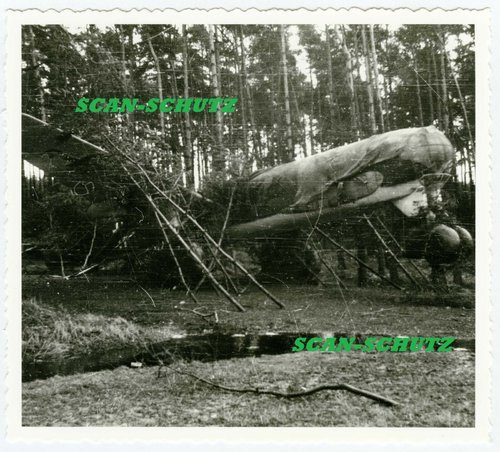
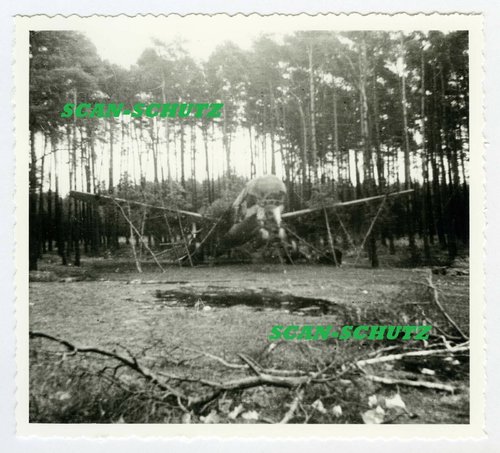

Flugzeugfoto Junkers 287 in Brandis 1944 (1) | eBay
Finden Sie Top-Angebote für Flugzeugfoto Junkers 287 in Brandis 1944 (1) bei eBay. Kostenlose Lieferung für viele Artikel!
www.ebay.de

Flugzeugfoto Junkers 287 in Brandis 1944 (2) | eBay
Finden Sie Top-Angebote für Flugzeugfoto Junkers 287 in Brandis 1944 (2) bei eBay. Kostenlose Lieferung für viele Artikel!
www.ebay.de
Vahe Demirjian
I really should change my personal text
- Joined
- 28 February 2013
- Messages
- 816
- Reaction score
- 539
I've attached a photo of the second Junkers Ju 287 prototype after it was destroyed by German forces at Brandis. The engine mounts under the wings for the twin BMW 003s and the inward cant of the main undercarriage struts. In the photos you attached, the Ju 287 V2/s trouser pants for the nose gear were painted light blue (as opposed to dark color for the Ju 287 V1's main undercarriage pants).Bandis 1944 - almost certainly the V-2
View attachment 622426View attachment 622427

Flugzeugfoto Junkers 287 in Brandis 1944 (1) | eBay
Finden Sie Top-Angebote für Flugzeugfoto Junkers 287 in Brandis 1944 (1) bei eBay. Kostenlose Lieferung für viele Artikel!www.ebay.de
Flugzeugfoto Junkers 287 in Brandis 1944 (2) | eBay
Finden Sie Top-Angebote für Flugzeugfoto Junkers 287 in Brandis 1944 (2) bei eBay. Kostenlose Lieferung für viele Artikel!www.ebay.de
Attachments
Vahe Demirjian
I really should change my personal text
- Joined
- 28 February 2013
- Messages
- 816
- Reaction score
- 539
To tidy up the confusion, the left side view featuring a forward-swept wing layout and lacking a tail turret was one of the initial design studies for the EF 132 (the baseline EF 132 design with backswept wings had a tail turret and the same powerplant and cockpit glazing design as the FSW design, although it was slightly shorter and had a slightly smaller wingspan). Note that the EF 132 illustration in the 1974 publication by Hitchcock was probably erroneous (except for backswept wings) because we know that the Ju 287 publication by Hitchcock is riddled with a number of errors (misidentification of Ju 287 V3 as Ju 287 V2, statement about Ju 287 V3 being armed and the first Ju 287 prototype being damaged in an Allied air raid in late summer 1944, and the inaccurate assertion about Ju 287 V2 and V3 being flown in USSR after WW2).The side-view has backwards swept wings and no tail turret, no engines in the wings, and no turret behind the (very differently glassed) cockpit.
The EF 132 design study with FSW wings and six Jumo 012s is similar to the June 1946 proposal for a Jumo 012-powered EF 132 in that it lacked a tail turret, but the 1947 EF 132 proposal with six Mikulin turbojets retained the tail turret of the initial backswept wing EF 132 project from early 1945.
Vahe Demirjian
I really should change my personal text
- Joined
- 28 February 2013
- Messages
- 816
- Reaction score
- 539
Three-view drawing of the Junkers EF 132 strategic jet bomber project (Dmitry Sobolev's book "German trails in Soviet aviation history")

A number of posts regarding the EF 132 have been posted elsewhere in this forum, but it should be stressed that the EF 132 shared little in common with the Ju 287 and EF 131 except for the Ju 288-type nose section.
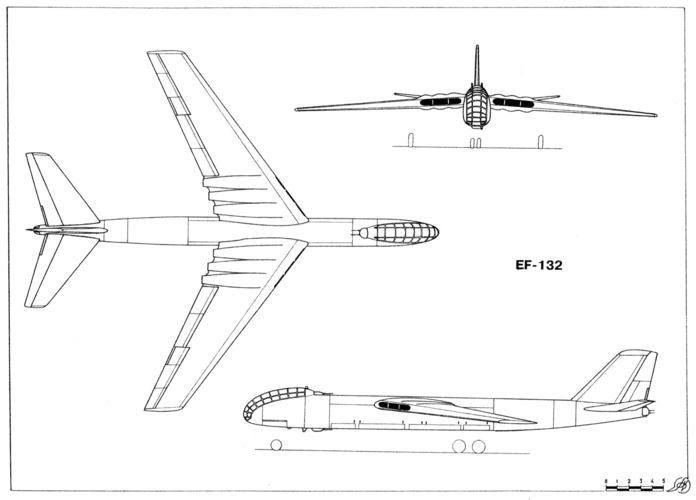
A number of posts regarding the EF 132 have been posted elsewhere in this forum, but it should be stressed that the EF 132 shared little in common with the Ju 287 and EF 131 except for the Ju 288-type nose section.
gabrielorosco
I really should change my personal text
- Joined
- 10 December 2016
- Messages
- 175
- Reaction score
- 200
Was it really built in soviet union? I've never seen any photo about it.
Vahe Demirjian
I really should change my personal text
- Joined
- 28 February 2013
- Messages
- 816
- Reaction score
- 539
No, and it was a project only. The EF 132 was designed in Germany in early 1945, and details of the initial EF 132 are available at this link:Was it really built in soviet union? I've never seen any photo about it.
http://www.luft46.com/junkers/juef132.html (the wind tunnel model in the photo at this weblink is actually one EF 116 design configuration, not the EF 132)
Drawings of later design studies for the EF 132 project are available at these links:
gabrielorosco
I really should change my personal text
- Joined
- 10 December 2016
- Messages
- 175
- Reaction score
- 200
Thank you!No, and it was a project only. The EF 132 was designed in Germany in early 1945, and details of the initial EF 132 are available at this link:Was it really built in soviet union? I've never seen any photo about it.
http://www.luft46.com/junkers/juef132.html (the wind tunnel model in the photo at this weblink is actually one EF 116 design configuration, not the EF 132)
Drawings of later design studies for the EF 132 project are available at these links:
- Joined
- 11 March 2006
- Messages
- 8,606
- Reaction score
- 3,045
From what we know from various sources, the EF 132 is a further development of a line of designs, that had
the Ju 287 as its one and only, that actually reached the state of hardware. And that's, what the thread title should say.
Breaking it up into a number of different threads, like "Ju 287", "EF 66", "EF 131" and "EF 132" would have been an option,
but wouldn't make reading and understanding this development easier. And yes, the differences between the first steps
and the type, that was designed after 1945 really are big, but that's true for a number of other types, too.
And here, we would have to split this 13 years old thread completely, without improving anything, to my opinion.
the Ju 287 as its one and only, that actually reached the state of hardware. And that's, what the thread title should say.
Breaking it up into a number of different threads, like "Ju 287", "EF 66", "EF 131" and "EF 132" would have been an option,
but wouldn't make reading and understanding this development easier. And yes, the differences between the first steps
and the type, that was designed after 1945 really are big, but that's true for a number of other types, too.
And here, we would have to split this 13 years old thread completely, without improving anything, to my opinion.
sgeorges4
I really should change my personal text
- Joined
- 8 October 2017
- Messages
- 659
- Reaction score
- 316
their was a german EF 132 wich looked somewhat like the 287 but it's rather weird how art show the russian variant with german marking ,also the so call "EF 132 model" is in fact the EF 116 as show by dan sharp in his bookazine luftwaffe secret design
- Joined
- 11 June 2014
- Messages
- 1,332
- Reaction score
- 1,762
From, Jet Planes of the Third Reich - The Secret Projects-volume two,
what was the alternative competitors to Ju-287 ?.
This appears to refer to a paper presented to the Deutsche Akademie der Luftfahrtforschung in February 1945 (see attached). Bock didn't look at competitors - he looked at 'all the advanced German combat aircraft'. These included the Ar 234, Me 163 B and Me 262.
Attachments
Last edited:
- Joined
- 11 June 2014
- Messages
- 1,332
- Reaction score
- 1,762
The Ju 287 was involved in two competitions.
Strahlbomber - specification issued July 1943. Competitors assessed and considered:
Junkers EF 122 (Ju 287)
Heinkel P 1068 (He 343)
Blohm & Voss P 188 (this design appears to have been dismissed very quickly!)
Langstreckenbomber - specification issued January 1945. Competitors assessed and considered (see attachment below):
Junkers Ju 287
Horten H XVIII (sometimes written as Horten 18)
Messerschmitt P 1107
There appear to have been a few peripheral designs in each case. For example, although the P 1068 nominally became the He 343, the He 343 was in reality a scaled up Ar 234 with a few minor tweaks to cockpit, tail and wing design. The original P 1068 project continued under that designation and was adapted into a series of subscale gliders that the DFS worked on with the goal of testing wing sweepback. Arado's E 395 was a more direct upscaling of the Ar 234 that dates from around the time that the P 1068 was 'becoming' the He 343. It's not clear what the relationship, if any, is between the E 395 and the He 343 but the E 395 doesn't ever seem to have been a direct contender for a production contract.
The Langstreckenbomber competition was foreshadowed by Arado's E 555/560 projects, both of which looked at different configurations for exactly the sort of bomber which the contest would eventually end up specifying. And in fact Heinkel seems to have hoped that the He 343 could be revived for Langstreckenbomber - it had clung onto the two partially completed prototypes since work on them ceased part-way through 1944. But these hopes were quickly dashed. The so-called Daimler-Benz projects also appeared at around this time and although they do indeed appear to have originated with Daimler-Benz, Focke-Wulf was responsible for the detail design and crunching the numbers to see whether those designs would work. But like the E 555/560, these designs do not appear to have been given serious consideration.
Finally, there are the Messerschmitt P 1108 and Junkers EF 130.
The discussions that took place during the Langstreckenbomber assessment process concluded that although the Ju 287 was less than ideal from a performance standpoint, it was clearly the sensible choice for an 'immediate solution' (the contemporary reports do actually use this sort of language). However, the H XVIII format appeared to have a lot of potential in the longer term (a big wing being able to hold more fuel and more bombs while also maintaining a reasonable speed using jet propulsion). Messerschmitt, which had failed rather badly with its two-step approach for P 1107 (a 'simple' design to start with, later developed into a more advanced design') appears to have been commissioned to come up with a flying wing project in the H XVIII format and to see whether the problems inherent in that design could be ironed out. The result was the P 1108 designs.
However, Messerschmitt had plenty of other work on and the H XVIII follow-on project was soon taken off Messerschmitt and given to reliable government-owned Junkers, who were told to continue it with the Horten brothers as consultants. The result was the Junkers EF 130. As mentioned elsewhere, we don't really know too much about the EF 130, primarily because it was such a short-lived project.
Strahlbomber - specification issued July 1943. Competitors assessed and considered:
Junkers EF 122 (Ju 287)
Heinkel P 1068 (He 343)
Blohm & Voss P 188 (this design appears to have been dismissed very quickly!)
Langstreckenbomber - specification issued January 1945. Competitors assessed and considered (see attachment below):
Junkers Ju 287
Horten H XVIII (sometimes written as Horten 18)
Messerschmitt P 1107
There appear to have been a few peripheral designs in each case. For example, although the P 1068 nominally became the He 343, the He 343 was in reality a scaled up Ar 234 with a few minor tweaks to cockpit, tail and wing design. The original P 1068 project continued under that designation and was adapted into a series of subscale gliders that the DFS worked on with the goal of testing wing sweepback. Arado's E 395 was a more direct upscaling of the Ar 234 that dates from around the time that the P 1068 was 'becoming' the He 343. It's not clear what the relationship, if any, is between the E 395 and the He 343 but the E 395 doesn't ever seem to have been a direct contender for a production contract.
The Langstreckenbomber competition was foreshadowed by Arado's E 555/560 projects, both of which looked at different configurations for exactly the sort of bomber which the contest would eventually end up specifying. And in fact Heinkel seems to have hoped that the He 343 could be revived for Langstreckenbomber - it had clung onto the two partially completed prototypes since work on them ceased part-way through 1944. But these hopes were quickly dashed. The so-called Daimler-Benz projects also appeared at around this time and although they do indeed appear to have originated with Daimler-Benz, Focke-Wulf was responsible for the detail design and crunching the numbers to see whether those designs would work. But like the E 555/560, these designs do not appear to have been given serious consideration.
Finally, there are the Messerschmitt P 1108 and Junkers EF 130.
The discussions that took place during the Langstreckenbomber assessment process concluded that although the Ju 287 was less than ideal from a performance standpoint, it was clearly the sensible choice for an 'immediate solution' (the contemporary reports do actually use this sort of language). However, the H XVIII format appeared to have a lot of potential in the longer term (a big wing being able to hold more fuel and more bombs while also maintaining a reasonable speed using jet propulsion). Messerschmitt, which had failed rather badly with its two-step approach for P 1107 (a 'simple' design to start with, later developed into a more advanced design') appears to have been commissioned to come up with a flying wing project in the H XVIII format and to see whether the problems inherent in that design could be ironed out. The result was the P 1108 designs.
However, Messerschmitt had plenty of other work on and the H XVIII follow-on project was soon taken off Messerschmitt and given to reliable government-owned Junkers, who were told to continue it with the Horten brothers as consultants. The result was the Junkers EF 130. As mentioned elsewhere, we don't really know too much about the EF 130, primarily because it was such a short-lived project.
Attachments
Last edited:
- Joined
- 26 May 2006
- Messages
- 32,639
- Reaction score
- 11,813
Yes it's.Hi Everyone I was just wondering if which variant of the ju 287 this is thank you
From Flying 1949-4.
Attachments
- Joined
- 6 November 2010
- Messages
- 4,221
- Reaction score
- 3,141
That is an image from Geheimprojekte der Luftwaffe - Band II - Strategische Bomber 1935-1945 by Dieter Herwig and Heinz Rode, Motorbuch Verlag 1998.Hi Everyone I was just wondering if which variant of the ju 287 this is thank you
The book's caption says it shows the Ju 287 V3 in its projected production version.
I am not sure whether Herwig and Rode are reliable in this case.Junkers Ju 287 V3 in der vorgesehenen Serienausführung.
- Joined
- 11 June 2014
- Messages
- 1,332
- Reaction score
- 1,762
That is an image from Geheimprojekte der Luftwaffe - Band II - Strategische Bomber 1935-1945 by Dieter Herwig and Heinz Rode, Motorbuch Verlag 1998.Hi Everyone I was just wondering if which variant of the ju 287 this is thank you
The book's caption says it shows the Ju 287 V3 in its projected production version.
I am not sure whether Herwig and Rode are reliable in this case.Junkers Ju 287 V3 in der vorgesehenen Serienausführung.
It's really hard to say what the Ju 287 series production model would have looked like. In April 1944, it was intended that Ju 287 V3-V20 would each be fitted with 6 x BMW 003. It's unclear what the favoured arrangement for these engines was at that time (probably one either side of the cockpit and two under each wing). By August 1944, when the project was put on hold, it was projected that the engines would be attached in two groups of three, one group under each wing.
When the project was revived in January 1945, it was compared against the Messerschmitt P 1107 and Horten XVIII on the basis that each would be powered by 4 x HeS 011. Again, the likely arrangement of these engines on the Ju 287 is unclear.
The Junkers design won the competition but it's by no means certain that the first models would actually have been powered by the HeS 011, since it wasn't due to enter series production till 1946. Then again, all Jumo 004 production was, by then, allocated to the Me 262 and all BMW 003 production was intended for the He 162. Even if the war had continued, the Ju 287's fate might have depended on whether the HeS 011 could be brought to series production.
archipeppe
ACCESS: Top Secret
- Joined
- 18 October 2007
- Messages
- 2,286
- Reaction score
- 2,318
Similar threads
-
Junkers Ju 85/88/188/388 & 488 - Projects, Prototypes and Variants
- Started by hesham
- Replies: 85
-
Aerospace History Files publication on the Junkers Ju 287
- Started by Vahe Demirjian
- Replies: 4
-
-
Junkers EF-130 speculative drawings
- Started by Justo Miranda
- Replies: 47
-

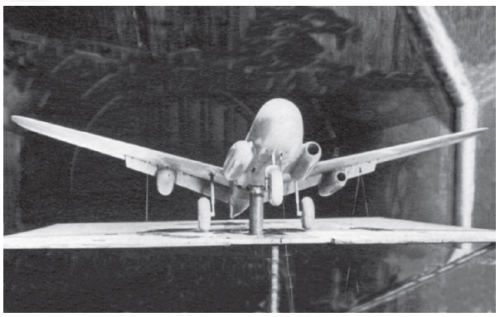

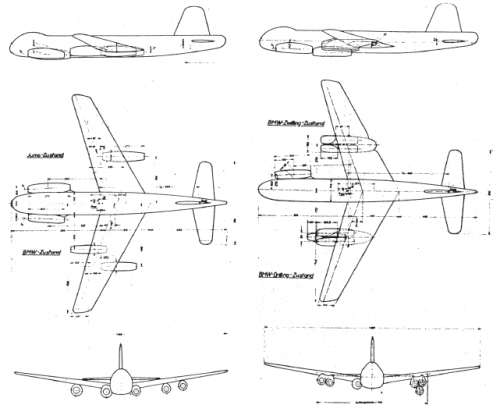
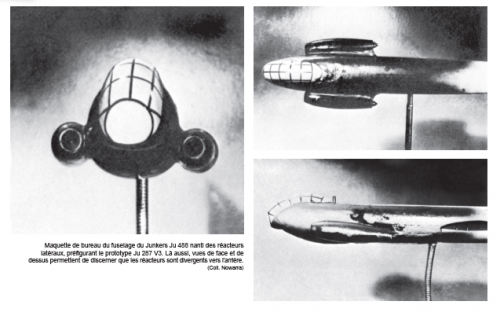
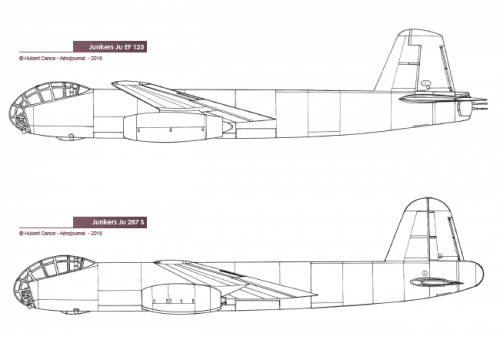
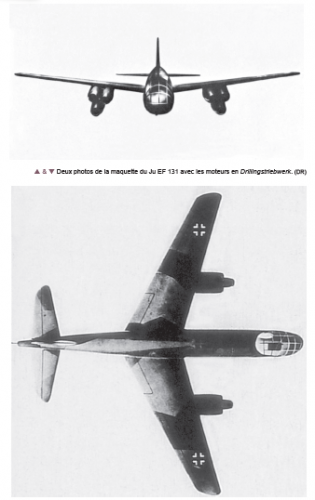
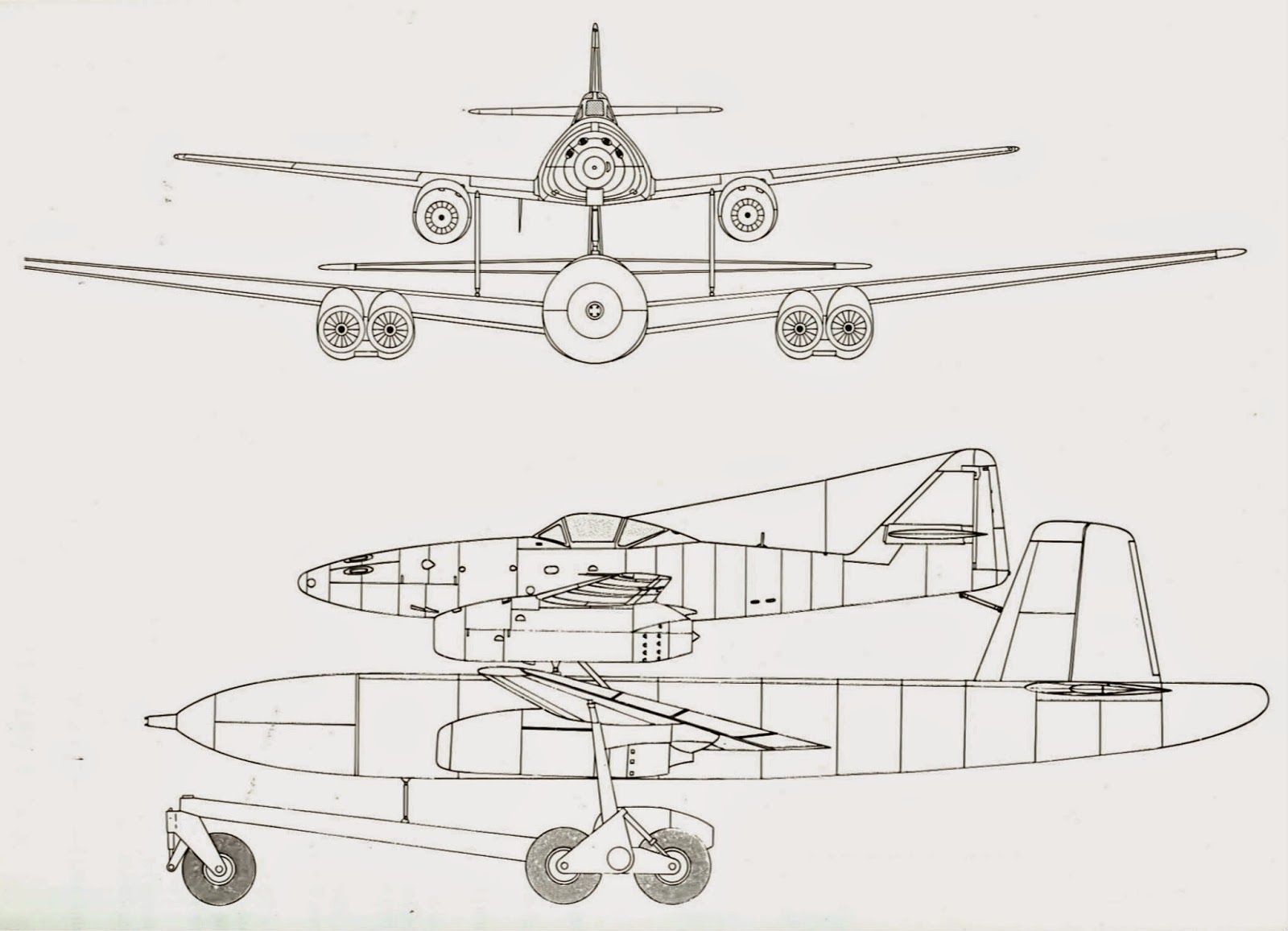
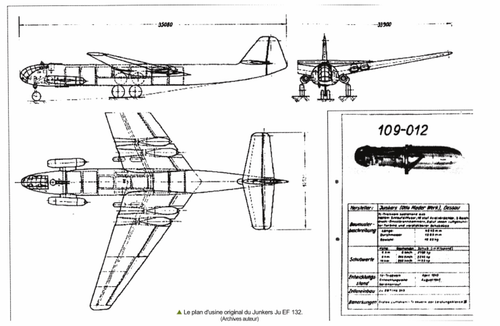

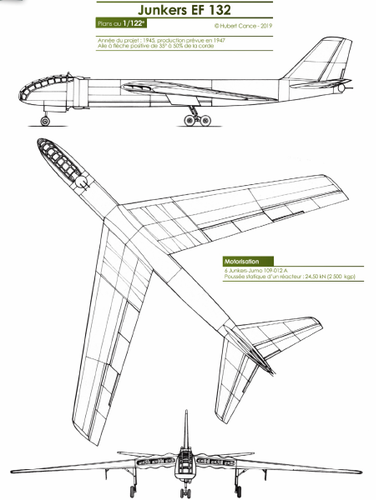
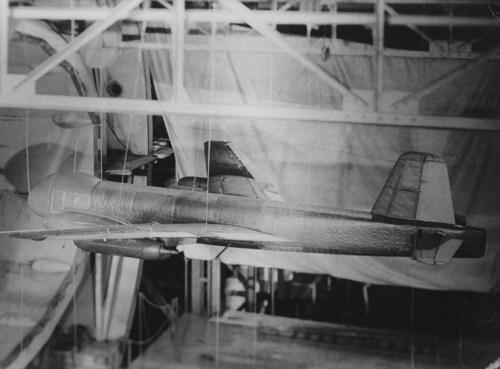
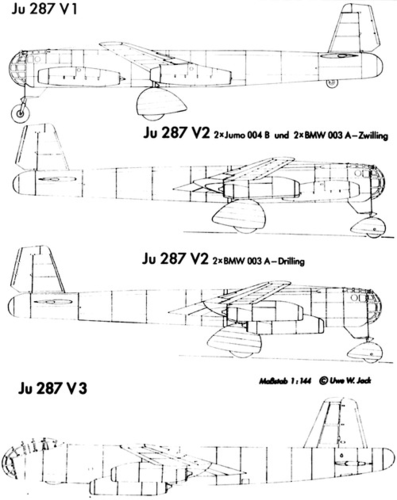
![Ju287V2 Brandis 1945 02[6641].jpg](/data/attachments/179/179317-8f3074ddfebb6ba880c2858c61b2ce74.jpg)
